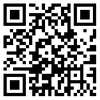Generation of Load Spectrums
Time:23 Aug,2024
<p><span style="font-family: arial, helvetica, sans-serif; font-size: 12px; text-align: justify;">Time-torque-speed data is usually measured at the input or the output coupling of a drive system. Such data must be modified by a factor (transmission ratio) to get the load at the considered machine element and then further modified depending on the type of the considered element. The tooth of a rotating gear is loaded only when the tooth contact occurs. As a result, a tooth is loaded by a sequence of pulsating loads and is stressed only by a portion of the full load data, whereas shafts and bearings are continuously loaded and get the full load data.
Machine elements stressed by bending are very sensitive to load change. This is the case for gear teeth and shafts, but not bearings. To get all significant cycles with torque changes, the so-called “rainflow” method is used (Refs. 6, 7). Rainflow analysis provides a matrix that shows how often any torque changes happen. For bearings, a much simpler method called “simple count” can be used (Refs. 1, 3). Table 1 gives an overview of the different methods.</span><br/></p><p style="text-align: center;"><img src="/ueditor/php/upload/image/20240823/1724397977555583.png" title="1724397977555583.png" alt="T1.png"/></p><p style="text-align: justify;"><span style="font-family: arial, helvetica, sans-serif; font-size: 12px;">Depending on the machine element type and the load data (if always positive or positive and negative) different load spectrum types must be generated. See Table 2 for the definition of these types.</span></p><p style="text-align: center;"><span style="font-family: arial, helvetica, sans-serif; font-size: 12px;"><img src="/ueditor/php/upload/image/20240823/1724397989114227.png" title="1724397989114227.png" alt="T2.png"/></span></p>

